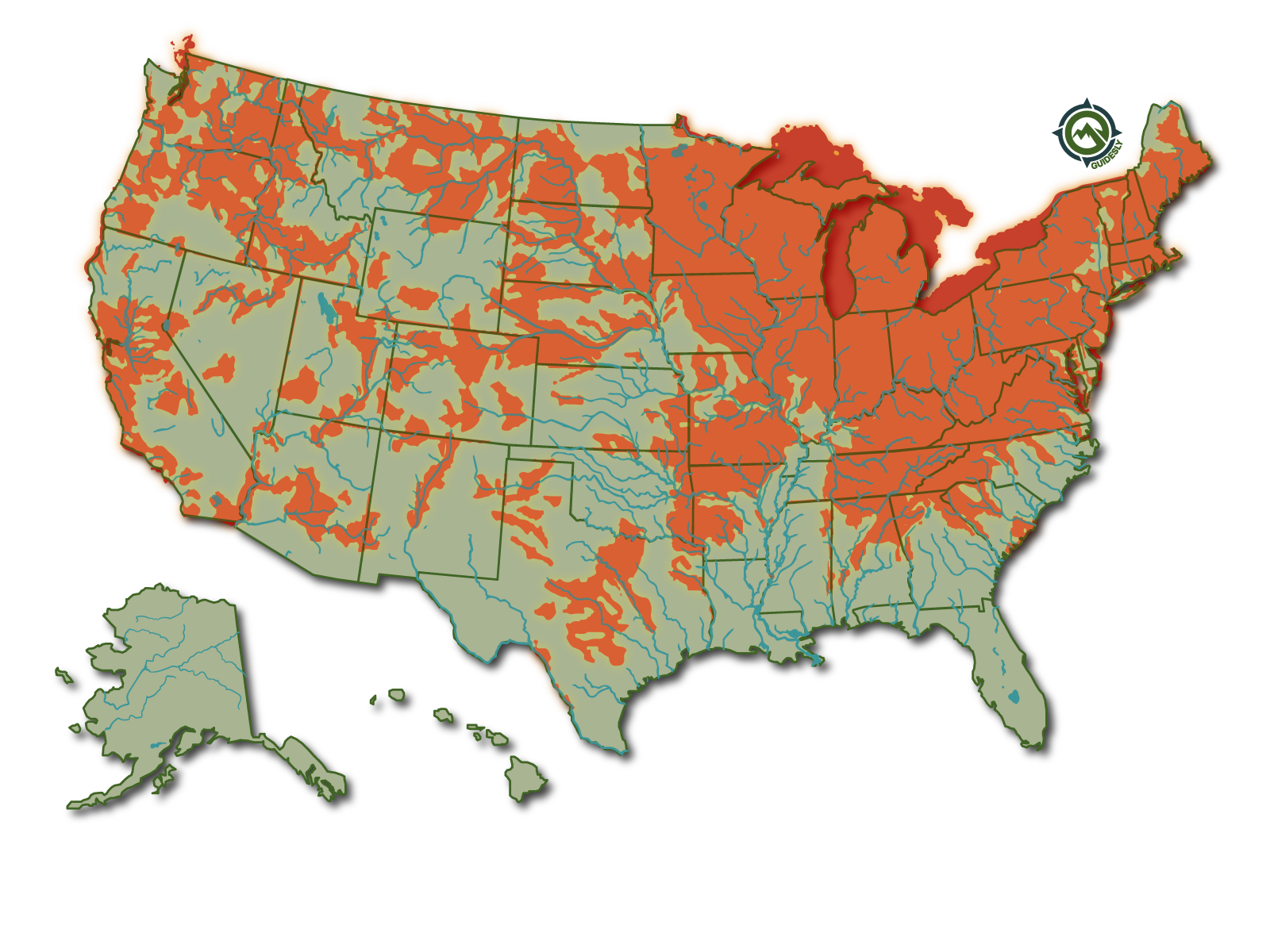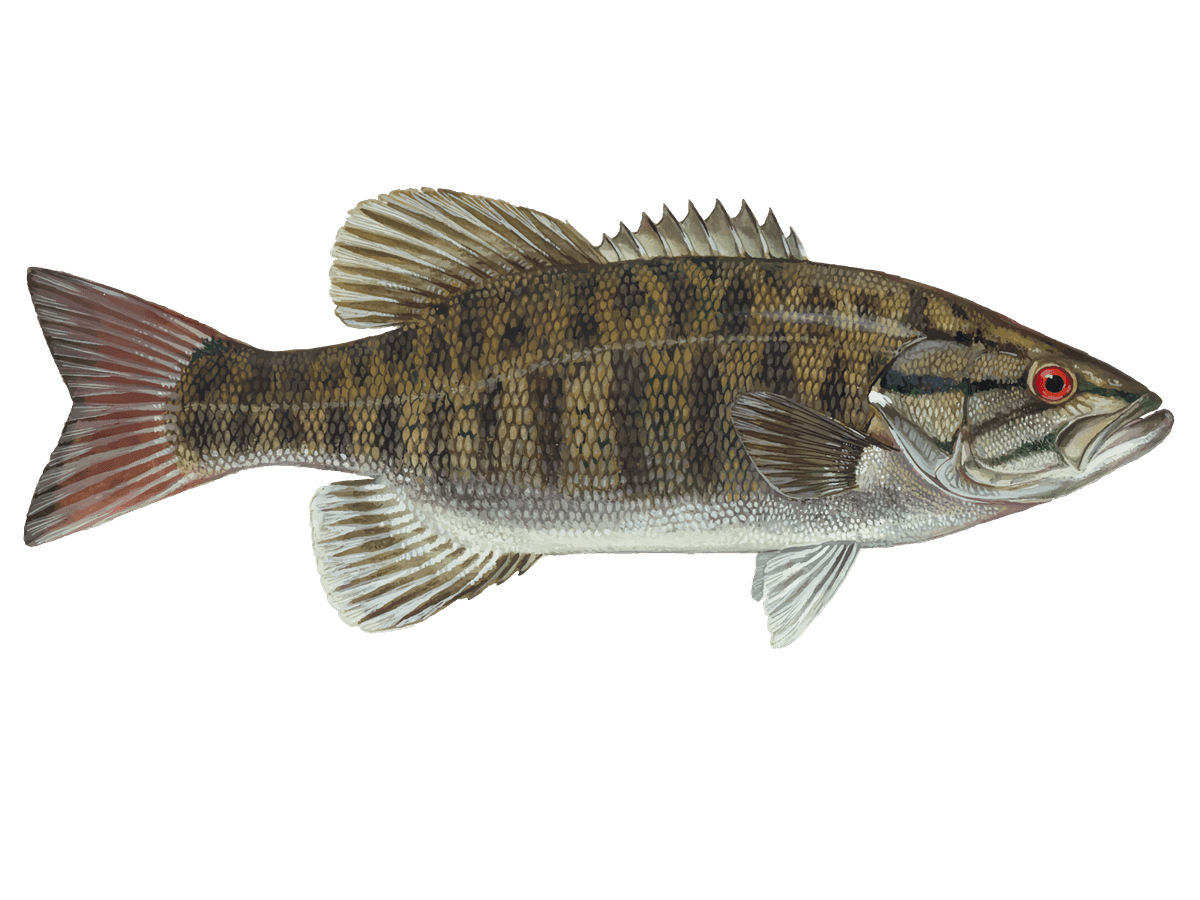Renowned Gasconade River Bass Fishing Adventure
- Published Date: October 5, 2025
- Fishing
- Missouri
- $350 price range
Summary
%2F%2Fusers%2F1a5ba064-9b7e-4ab3-8417-47b89053f1be%2Fratecard%2F550602263_1397866078879668_737850088451216950_n-mgato268.jpg&w=1200&q=75)
Smallmouth Action Shots


Smallmouth Smackdown on the Gasconade
Get ready to tangle with some hard-fighting bronzebacks on one of Missouri's most scenic rivers. This full-day trip with Gasconade River Guide puts you right in the thick of prime smallmouth country. You'll be fishing with Tommy Bench, a local expert who knows every bend, eddy, and honey hole on this stretch. Whether you're looking to dial in your technique or just want to bend a rod, this trip's got you covered. We keep it small – just you and up to three buddies – so you'll get plenty of one-on-one time with Tommy to fine-tune your approach.
A Day on the Gasconade
You'll meet up with Tommy early, usually right as the sun's starting to peek over the hills. After a quick gear check and safety rundown, you'll hop in the boat and start working your way downstream. The Gasconade's got a little bit of everything – from slow, deep pools where the big boys like to hang out, to fast riffles where smaller bass ambush their prey. Tommy's always got his finger on the pulse of what's working, so be ready to switch up tactics throughout the day. You might start off throwing topwater at dawn, then switch to finesse plastics as the sun gets higher. Expect to cover a good stretch of river, with plenty of stops to wade and work promising spots from shore.
Gearing Up for Gasconade Smallies
For this trip, you'll want to bring a medium-action spinning or baitcasting setup, 6-8 pound test line, and a variety of lures. Tommy's partial to small crankbaits, inline spinners, and soft plastics, but he's always experimenting with new stuff. Don't worry if you're not fully stocked – Tommy's got a boatload of tackle and he's happy to share his go-to baits. Waders are a good idea if you've got 'em, especially in the cooler months. And don't forget your polarized shades – they're crucial for spotting structure and fish in the clear Gasconade waters.
Target Species Breakdown
Smallmouth Bass: These are the stars of the show on the Gasconade. Known as bronzebacks for their beautiful golden-brown coloration, smallies are pound-for-pound some of the hardest fighting fish in freshwater. They love rocky habitat and current, which the Gasconade has in spades. You can expect to tangle with fish in the 1-3 pound range, with the occasional 4+ pounder not out of the question. Smallmouth really turn on in late spring and early fall, but you can catch 'em year-round if you know how to adjust your tactics. What makes them so fun is their aggressive strikes and acrobatic fights – when a good smallie hits, hold on tight!
Largemouth Bass: While not as common as their smallmouth cousins, the Gasconade does hold some quality largemouth, especially in the slower, weedier sections. These fish can grow bigger than smallmouth, with 5+ pounders possible. They're ambush predators, so look for them around laydowns, weed edges, and other cover. Largemouth are less active in current, so focus on the backwaters and eddies if you're targeting them specifically.
Spotted Bass: Also called Kentucky bass, these fish are like a cross between largemouth and smallmouth in both appearance and behavior. They love current like smallies but can tolerate warmer, murkier water like largemouth. Spots are typically smaller than the other bass species, but what they lack in size they make up for in numbers and willingness to bite. They're a blast on light tackle and can save the day when the bigger bass are being finicky.
Why Anglers Keep Coming Back
The Gasconade isn't just about the fishing – it's the whole package. As you drift along, you'll be surrounded by towering limestone bluffs, lush forests, and the kind of scenery that'll have you reaching for your camera as often as your rod. Bald eagles are a common sight, and you might spot deer, turkey, or other wildlife coming down to the water's edge. It's the perfect blend of action and relaxation. Plus, with Tommy's local knowledge, you'll learn more than just fishing techniques – he's a wealth of information on the river's history, ecology, and the best spots to grab a burger after your trip.
Time to Wet a Line
If you're itching to tangle with some of Missouri's hardest-fighting fish in a setting that'll take your breath away, it's time to book your spot with Gasconade River Guide. Whether you're a seasoned pro looking to dial in your smallmouth game or just want a day of quality fishing in beautiful surroundings, this trip delivers. Remember, it's $350 for one angler, $500 for two, and $250 for each additional person up to four. Spots fill up fast, especially during prime seasons, so don't wait to lock in your date. Give Tommy a call, and get ready for a day on the water you won't soon forget. The Gasconade's waiting – are you ready to take it on?
Learn more about the species
Smallmouth Bass
Smallmouth Bass (Micropterus Dolomieu) Description
Smallmouth Bass belongs to the Sunfish family (Centrarchidae) and is a popular freshwater fish among anglers. Smallmouth Bass has a dark green or black color body, with vertical dark brown stripes that usually fade with age, and the color contrast may vary depending on the fish’s habitat. Their eyes are red or brown. They have two dorsal fins; the front one has 10 fin spines while the other has 10 to 15 soft rays.

Female Smallmouth bass are usually larger in size than males. The average size of smallmouth bass can be 18–20 inches. On average, they usually live only 5 to 6 years but can survive up to 15 years. Smallmouth bass found in lakes are larger than those found in streams and ponds. Females usually weigh from three to six pounds, while the males are around 2 pounds.
Smallmouth Bass Habitat

This bass species can be found in clear waters, such as ponds, lakes, and rivers. They prefer rubble and rocky bottoms. Smallmouth bass also prefer moderate temperatures, and they will swim deeper in the cooler water during summer.
Spawning
Smallmouth Bass spawn March-May when water temperatures reach between 59 and 64 degrees. The males build nests in the shallow waters of lakes and rivers. The nest is built building within 150 yards of where the male built his nest the previous year.
Diet
The Smallmouth Bass eats small fish, crayfish, and insects. They hide behind a fallen tree or a rock and attack when the prey is near.
Fishing Techniques - How to Catch Smallmouth Bass
A light breeze and calm waters are best suited to catch Smallmouth Bass. In spring and fall, they like to swim in open waters during bright days and warm temperatures. In summer, they swim deep under cooler water and are harder to find. It is best to fish for Smallmouth early morning or late evening.
Smallmouth bass are fighters. A spinning rod of light to medium action with a 6 to 10 pounds test line is recommended.
There are plenty of baits and lures that work successfully to catch these fish; insects, jigs, minnows, plugs, plastic worms, spoons and night crawlers. A favorite of anglers is to use spinning baits that when rigged weightless, can hang on top of the water. When the fish are in deeper water during the summer, use a rig with a weighted vertical drop hook.
Fly-fishing Smallmouth Bass is popular due to their abundance and strength. When you want to cast into deeper water, use a 6, 7 or 8 weight rod. This will be suitable for strong winds, landing larger fish, and a long cast. A longer rod, 81/2- to 9-foot, is good when you need accuracy for casting near shoreline structures or long-distance casting.
Is Smallmouth Bass Good to Eat
Smallmouth bass have a firm filet with a mild, yet distinct flavor that pairs perfectly with a variety of seasonings and cooking methods. So whether you prefer grilling, frying, or baking your catch, smallmouth bass is a tasty and versatile option that you won't want to miss out on. What's more, smallmouth bass are a healthy food option, as they are excellent sources of protein and Omega-3 fatty acids.
With any freshwater fish, you need to be mindful of the water you are fishing. Make sure if you are eating your catch, the water is clean and be aware that freshwater fish should always be cooked.

About the Reed Craft
%2F%2Fusers%2F1a5ba064-9b7e-4ab3-8417-47b89053f1be%2Fvehicle_picture%2F236752597_6103596989680997_9134135555879781115_n.jpg&w=1200&q=75)
Vehicle Guest Capacity: 3
Manufacturer Name: Suzuki
Maximum Cruising Speed: 20
Number of Engines: 1
Horsepower per Engine: 85
%2Ffit-in%2F250x250%2Fguide_websites%2F7176%2Fimages%2F329529922_1292222958021967_2991686103296097423_n-removebg-preview.png&w=1200&q=100)
%2Fusers%2F1a5ba064-9b7e-4ab3-8417-47b89053f1be%2Fimages%2Flargemouth-bass-richland-fishing-2588.jpg&w=768&q=75)
%2Fusers%2F1a5ba064-9b7e-4ab3-8417-47b89053f1be%2Fimages%2Ffishing-richland-2399.jpg&w=768&q=75)
%2Fusers%2F1a5ba064-9b7e-4ab3-8417-47b89053f1be%2Fimages%2Fbest-great-fishing-richland-2511.jpg&w=768&q=75)
%2Fusers%2F1a5ba064-9b7e-4ab3-8417-47b89053f1be%2Fimages%2Fangler-fishing-missouri-2715.jpg&w=768&q=75)
%2Fusers%2F1a5ba064-9b7e-4ab3-8417-47b89053f1be%2Fimages%2Foutdoor-angling-escapade-mo-2488.jpg&w=768&q=75)
%2Fusers%2F1a5ba064-9b7e-4ab3-8417-47b89053f1be%2Fimages%2Fsmallmouth-bass-missouri-2581.jpg&w=768&q=75)
%2Fusers%2F1a5ba064-9b7e-4ab3-8417-47b89053f1be%2Fimages%2Foutdoor-adventure-richland-2457.jpg&w=768&q=75)
%2Fusers%2F1a5ba064-9b7e-4ab3-8417-47b89053f1be%2Fimages%2Frichland-fishing-adventure-2521.jpg&w=768&q=75)
%2Fusers%2F1a5ba064-9b7e-4ab3-8417-47b89053f1be%2Fimages%2Fmissouri-fishing-adventure-2527.jpg&w=768&q=75)
%2Fusers%2F1a5ba064-9b7e-4ab3-8417-47b89053f1be%2Fimages%2Fsmallmouth-bass-richland-2559.jpg&w=768&q=75)
